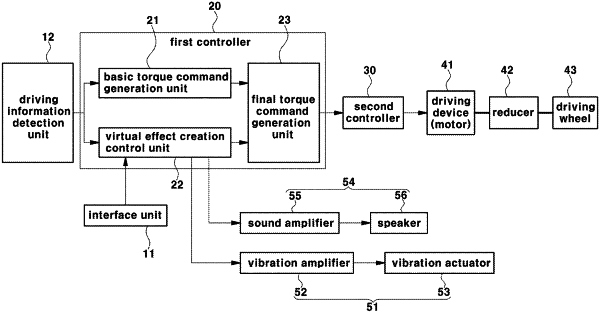| CPC B60L 15/20 (2013.01) | 20 Claims |

|
1. A method of virtualizing characteristics of an internal combustion engine vehicle in an electric vehicle, the method comprising:
determining, by a controller, a current input torque applied to a powertrain apparatus from a motor of the electric vehicle that makes the electric vehicle move;
determining, by the controller, an output torque which is a transmission torque based on a powertrain model from the determined current input torque using the powertrain model set to include a gear model;
determining, by the controller, tooth surface pressures of gears in the powertrain apparatus between the motor and driving wheels of the electric vehicle from the determined output torque;
generating, by the controller, a virtual effect signal for generating a virtual effect that simulates powertrain characteristics of the internal combustion engine vehicle based on the determined tooth surface pressures of the gears in the powertrain apparatus; and
generating, by the controller, a virtual effect that simulates powertrain characteristics of the internal combustion engine vehicle by controlling an operation of a virtual effect generation device that generates a virtual effect according to the generated virtual effect signal.
|